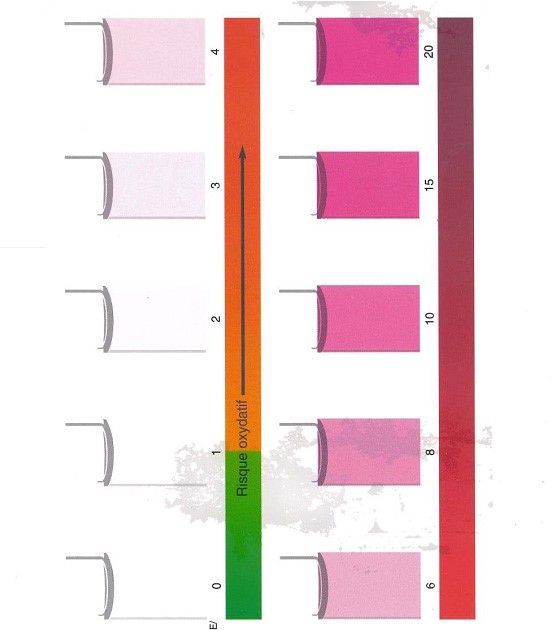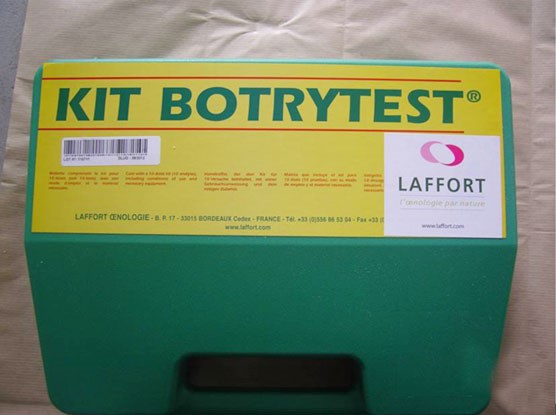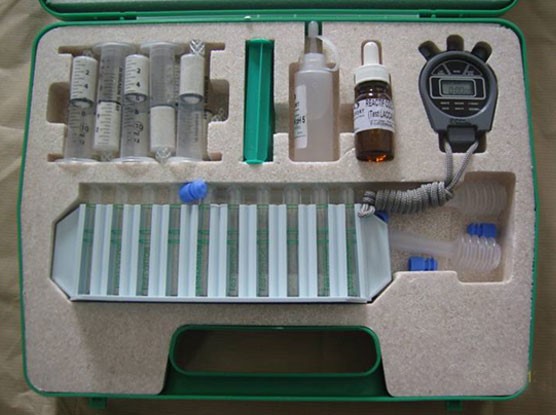
Determination of laccase activity
Grape juice to be tested must be unvulcanized.
1- insert 5mL of grape juice or wine into the injection tube of the laccase activity tester (BOTRYTEST) using a pipette.
2- place the tube in the laccase activity tester (BOTRYTEST) and wait for the resin in the tube to wet to the bottom (3 to 10 minutes), then install a piston on the top of the tube and gently inject into the tube until the first marking line of the tube is reached.
3- add 1,4 mL of buffer (up to second marker line of test tube), followed by 0,6 mL of reaction agent laccase activity tester (up to third marker line of test tube). Shake the tube so that the liquid in the tube is well mixed.
Determine the level of laccase activity after 4 to 3 minutes (stopwatch timing) against the colorimetric card.
Judge the result by comparing the color card
Reactif: Ethanol + Syringaldazine
Tampon: Acide Acetique + Sodium Acetate + water (EAU)Resin (Resine) : Sand (Sable) + polyvinyl pyrrolidone (PVPP)

Comparison card : green indicates no laccase crisis. From 1, the laccase content gradually increases as the color becomes darker.
Laccase (Botrytis cinerea)
The resulting substances can pose major problems for the wine-making process.
Laccase produces excess polysaccharide: Glucane
Dextran can pose tricky clarification problems.
Dextran can cause filtration difficulties.
The loss of wine quality is obvious.
Wasted costs.
Laccase (oxidase)
Yantai wine accessories - laccase will oxidize grape juice and wine, damage the aroma of wine and induce wine oxidation crisis.

